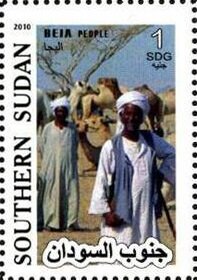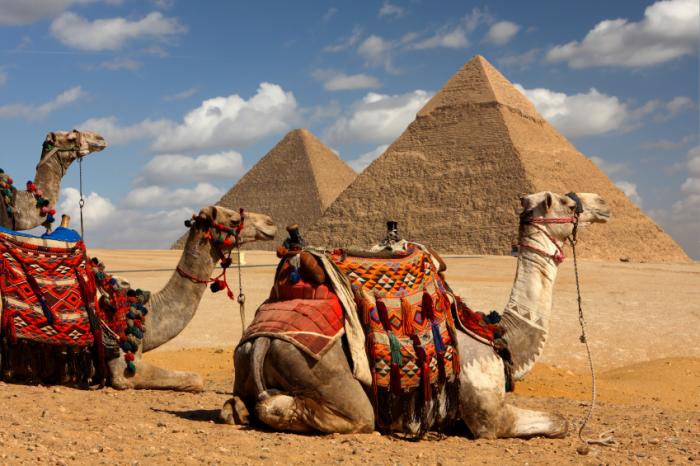Stamp: Beja people (Cinderellas 2010)
Beja people (Cinderellas 2010)
01 January (Cinderellas ) within release Sudan : Southern Sudan goes into circulation Stamp Beja people face value 1 Sudanese pound
| Stamp Beja people in catalogues | |
|---|---|
| Colnect codes: | Col: SD-SS 2010-02/2 |
Stamp is square format.
This item was illegally produced without the authorization of the postal administration inscribed on the stamps. They have no postal validity.Also in the issue Sudan : Southern Sudan:
- Stamp - Beja people face value 1;
- Stamp - Dinka people face value 3;
- Stamp - Ernesto "Che" Guevara (1928-1967) face value 1;
- Stamp - Ernesto "Che" Guevara (1928-1967) face value 5.50;
- Stamp - Fidel Castro (1926-2016) face value 1;
- Stamp - Fidel Castro (1926-2016) face value 7;
- Stamp - Fula people face value 3;
- Stamp - Hausa people face value 5.50;
- Stamp - Hồ Chí Minh (1890-1969) face value 5.50;
- Stamp - Leon Trotsky (1879-1940) face value 3;
- Stamp - Nubian people face value 5.50;
- Stamp - Nuer people face value 7;
- Mini Sheet - Peoples of Southern Sudan face value 37;
- Stamp - Shilluk people face value 11;
- Stamp - Vladimir Lenin (1870-1924) face value 3;
- Stamp - Vladimir Lenin (1870-1924) face value 7;
- Stamp - Zande people face value 1;
|
Data entry completed
50%
|
|
|---|---|
| Stamp Beja people in digits | |
| Country: | Cinderellas |
| Date: | 2010-01-01 |
| Emission: | Незаконный |
| Format: | Stamp |
| Face Value: | 1 Sudanese pound |
Stamp Beja people it reflects the thematic directions:
Animals are multicellular, eukaryotic organisms of the kingdom Animalia (also called Metazoa). All animals are motile, meaning they can move spontaneously and independently, at some point in their lives. Their body plan eventually becomes fixed as they develop, although some undergo a process of metamorphosis later on in their lives. All animals are heterotrophs: they must ingest other organisms or their products for sustenance.
A camel (from Latin: camelus and Greek: κάμηλος (kamēlos) from Ancient Semitic: gāmāl) is an even-toed ungulate in the genus Camelus that bears distinctive fatty deposits known as "humps" on its back. Camels have long been domesticated and, as livestock, they provide food (camel milk and meat) and textiles (fiber and felt from camel hair). Camels are working animals especially suited to their desert habitat and are a vital means of transport for passengers and cargo. There are three surviving species of camel. The one-humped dromedary makes up 94% of the world's camel population, and the two-humped Bactrian camel makes up 6%. The wild Bactrian camel is a separate species and is now critically endangered.
Mammals are any vertebrates within the class Mammalia (/məˈmeɪli.ə/ from Latin mamma "breast"), a clade of endothermic amniotes distinguished from reptiles (including birds) by the possession of a neocortex (a region of the brain), hair, three middle ear bones and mammary glands. All female mammals nurse their young with milk, secreted from the mammary glands. Mammals include the largest animals on the planet, the great whales. The basic body type is a terrestrial quadruped, but some mammals are adapted for life at sea, in the air, in trees, underground or on two legs. The largest group of mammals, the placentals, have a placenta, which enables the feeding of the fetus during gestation. Mammals range in size from the 30–40 mm (1.2–1.6 in) bumblebee bat to the 30-meter (98 ft) blue whale. With the exception of the five species of monotreme (egg-laying mammals), all modern mammals give birth to live young. Most mammals, including the six most species-rich orders, belong to the placental group. The largest orders are the rodents, bats and Soricomorpha (shrews and allies). The next three biggest orders, depending on the biological classification scheme used, are the Primates (apes and monkeys), the Cetartiodactyla (whales and even-toed ungulates), and the Carnivora (cats, dogs, seals, and allies).
A man is an adult male human. Prior to adulthood, a male human is referred to as a boy (a male child or adolescent).
A people is a plurality of persons considered as a whole, as is the case with an ethnic group or nation. Collectively, for example, the contemporary Frisians and Danes are two related Germanic peoples, while various Middle Eastern ethnic groups are often linguistically categorized as Semitic peoples.





